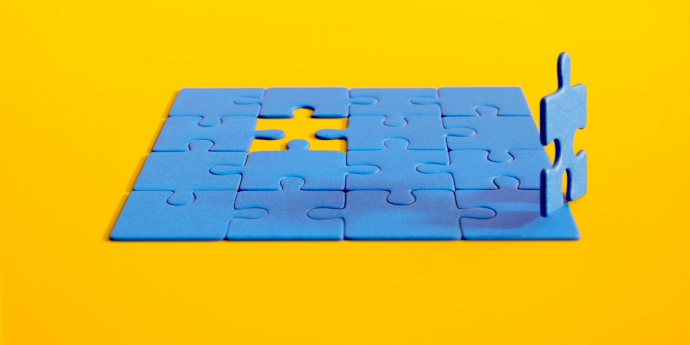
Like many people who changed jobs recently , Dave Nobles embarked on his new role without ceremony. Joining Microsoft was a career pivot after years in the Navy and then at a university-affiliated research center, but he woke up that first morning and sat down to work in the same home office where he’d spent the entire pandemic.
“Nothing changed except the computer I use and the sites I access,” says Nobles, who tried moving his desk to a new spot in the room when he joined Microsoft, “just to make the experience feel a little different.”
More broadly, Nobles wondered how he would adapt to his first job in the business world while being unable to connect with colleagues in person. “I was nervous as all get out,” Nobles, a director of digital advisory services, says. Would virtual onboarding help him feel a true sense of belonging to a new organization?
It’s a question that resonates with new employees across business sectors, and with employers too—and it’s still relevant as the pandemic eases. After more than a year of remote work for many employees, followed by the rollout of the COVID-19 vaccine, onboarding is evolving into a largely hybrid affair—sometimes virtual, sometimes in person, and often a mix of the two.
The challenge remains: acclimating new employees to a company and its culture when teams are together in person less often. Takeaways from the era of remote onboarding can help organizations recalibrate their strategies going forward.
More than 25,000 employees have joined Microsoft since the pandemic started. Like every company, Microsoft is still adjusting—and readjusting—its practices as it discovers what works best when it comes to remote and hybrid work, but Microsoft’s research has shown that a key component of success is a laser-like focus on something simple, even obvious: the day-to-day lived experiences of its employees.

Illustration by Leonardo Betti
Cultivate the most essential relationship for new hires: the one with their managers
The duty to make a remote worker feel welcome falls mostly on the new employee’s manager. During the pandemic, Microsoft found that new hires relied more heavily on managers than ever before.
Upper management responded by encouraging managers to personalize the onboarding process for each new employee, with an abundance of time devoted to individual conversations. Again, a seemingly obvious approach— and Microsoft found it to be extremely effective.
“We communicated to managers how important it is that you have one-on-ones early and often with your new hires,” says Dawn Klinghoffer, head of people analytics at Microsoft. “Managers took that really seriously, and they offered guidance in terms of aligning expectations on job priorities.”
Klinghoffer and her team have studied how remote work has affected Microsoft’s more than 150,000 employees, with new hires as one area of focus.
A key finding of their research: When managers played an active role, new employees were 3.5 times more likely to say they were satisfied with their onboarding experience. They were also 1.2 times more likely to feel that they were contributing to their teams’ success.
“We communicated to managers how important it is that you have one-on-ones early and often with your new hires.”
Strengthen the “organizational muscle”
But the welcoming committee has to stretch beyond managers. New hires need to develop a strong support network among their colleagues. An onboarding buddy program like the one at Microsoft, where new hires are paired with an experienced employee to turn to for informal help, is vital.
“Every new employee should have an onboarding buddy,” says Priya Priyadarshini, general manager for employee career and development at Microsoft. “Employees who have effective onboarding buddies are more satisfied with onboarding resources, more easily find the right contact for their questions, and feel that their buddies help them expand their networks and become more productive in their new role.”
Microsoft, for example, has found that 56 percent of new hires who met with their onboarding buddy at least once in their first 90 days said their contact helped them to quickly become productive on the job. That percentage jumped to 73 percent for those who met two to three times with their buddy, 86 percent for those who spoke four to eight times, and 97 percent for those meeting more than eight times.
Siobhan O’Mahony, a professor of innovation and entrepreneurship at Boston University, says developing strong bonds among colleagues is imperative for improving “the quality of the collective mind” of an organization. It preserves transactive memory, which is “basically who does what”—a collective understanding of how an organization gets the job done.
“That’s the organizational muscle that’s probably weakening right now,” O’Mahony says, referring to the moment between working from home and returning to the office.
That essential organizational muscle withers and dies without human interaction. Microsoft has found that offering a more personal touch to its onboarding efforts helps build social capital , or the benefits that come from ties with others. The company is keeping these lessons in mind as it embraces a flexible working model; after the pandemic is no longer a significant concern, working from home at least some of the time will be standard for most roles at Microsoft.

Illustration by Leonardo Betti
Focus on employee experience—including the details
In virtual onboarding, Microsoft has paid attention to the little things as well as the big ones, like sending new remote employees their hardware well in advance of their start date, giving them ample time to set up home workstations.
From a software perspective, Microsoft Teams offers tools to help people feel more connected during virtual onboarding—and in any meeting—including chat, polling, breakout sessions, and Together mode , which creates a shared virtual space where participants are not separated by barriers.
Early in the onboarding process, Microsoft directs remote hires to a tech tool called Microsoft Viva, an employee experience platform that brings together communications, learning, resources, and insights. It includes a glossary of internal company acronyms, a handy reference for new employees.
Onboarding buddies help new hires expand their networks and become more productive in their new role.
Share your vision—and your vulnerabilities
Nobles, the new Microsoft employee, joined the company from Johns Hopkins University Applied Physics Lab, a place he loved. He knew Microsoft had a strong culture, but 2021 was a tough time to change jobs, he thought. How would that culture translate to a remote environment? Could it?
But the stress passed quickly. Nobles’s laptop arrived days before he started, giving him time to explore Microsoft’s resources and use Teams to set up one-on-one meetings.
A former naval officer, Nobles is fascinated by the ways organizations build culture and inspire employees. The onboarding process emphasized Microsoft’s mission—to empower every person and every organization on the planet to achieve more—and that resonated with him. “I was able to rattle that off on day three of being on board,” he says.
On his first Friday on the job, Nobles attended a virtual Yammer session where top executives talked about their process. One in particular affected Nobles, who was struck by her vulnerability, “letting us into her world and how she operates. You were able to really establish context.”
Nobles says he experienced small moments, time and again, that helped him feel he belonged.
“I felt really free to ask questions,” he says. “It was surprisingly personal. The connection was meaningful.”

